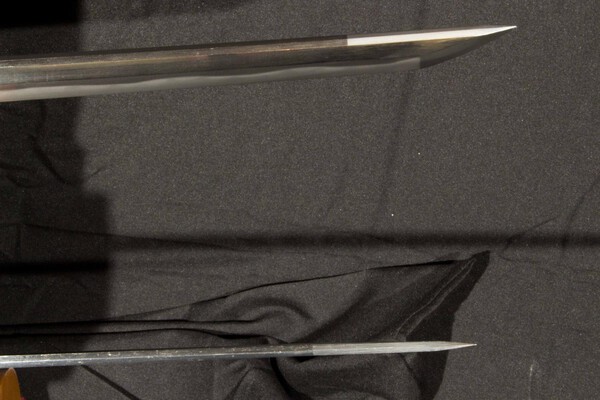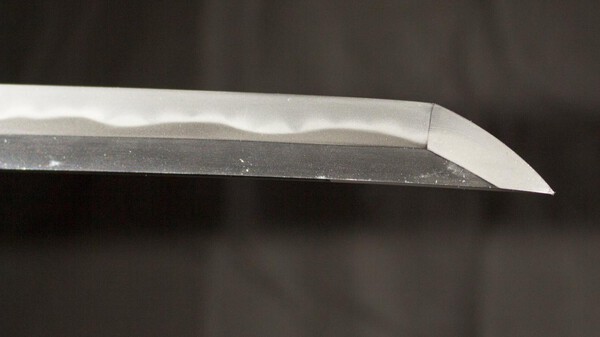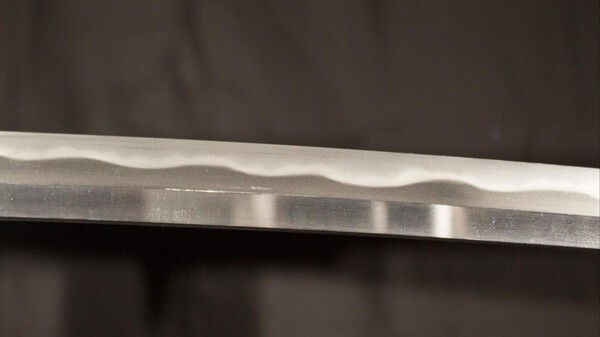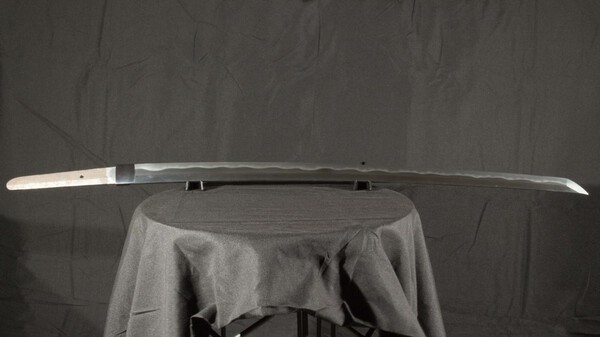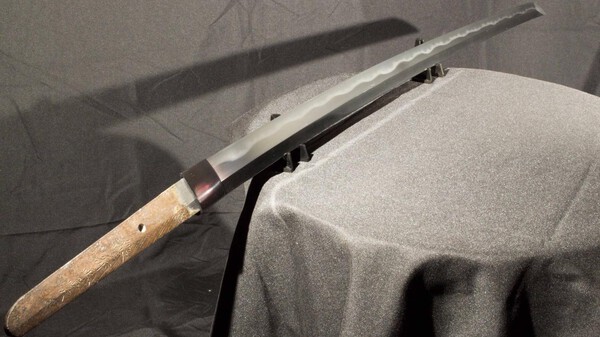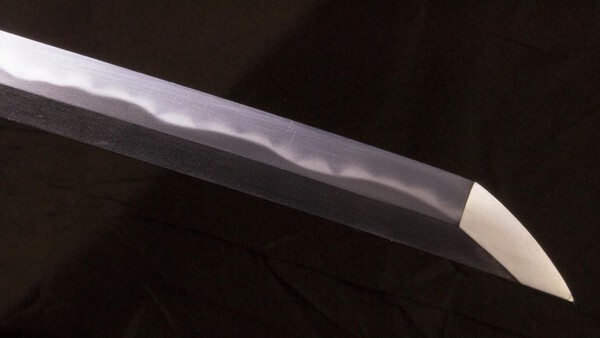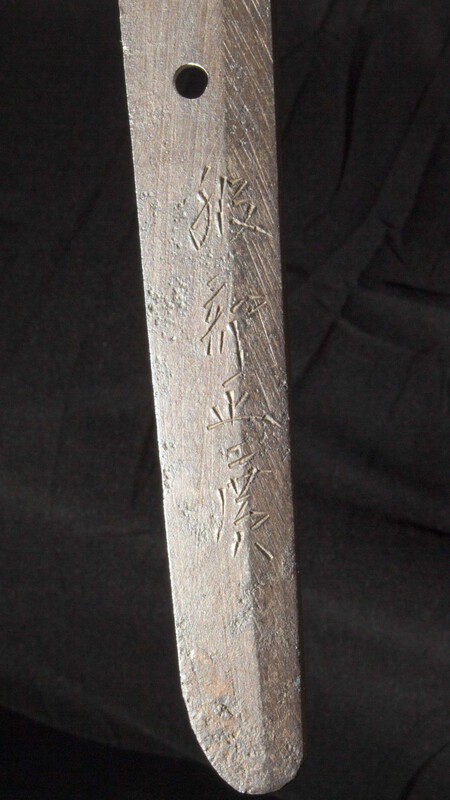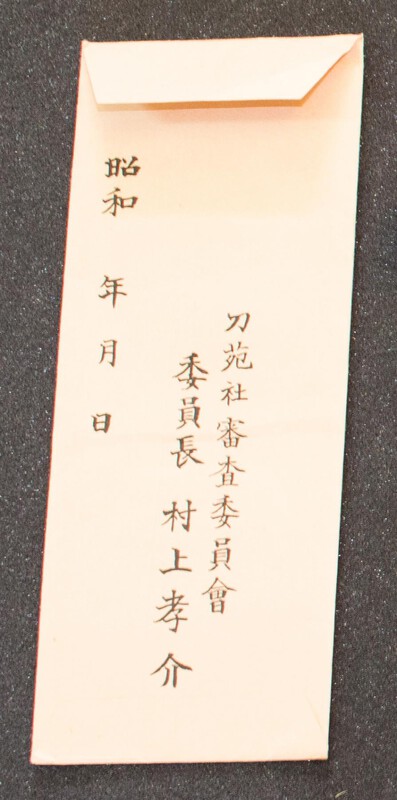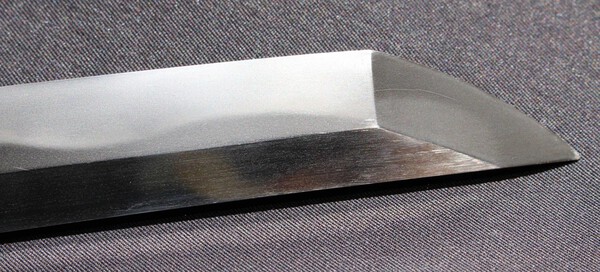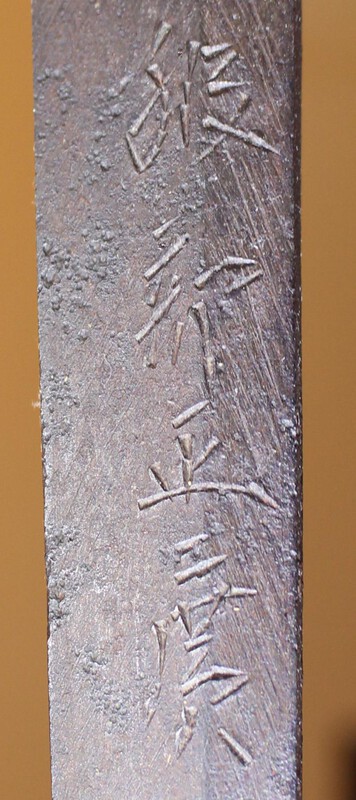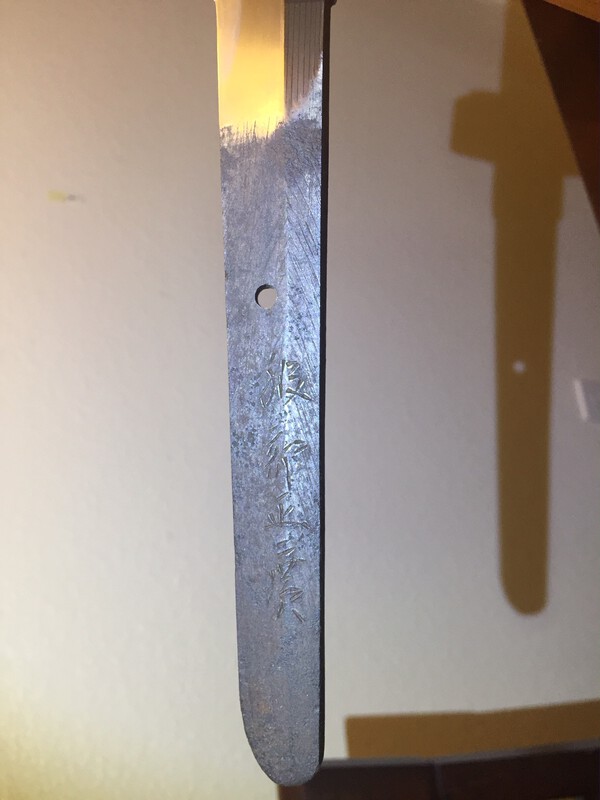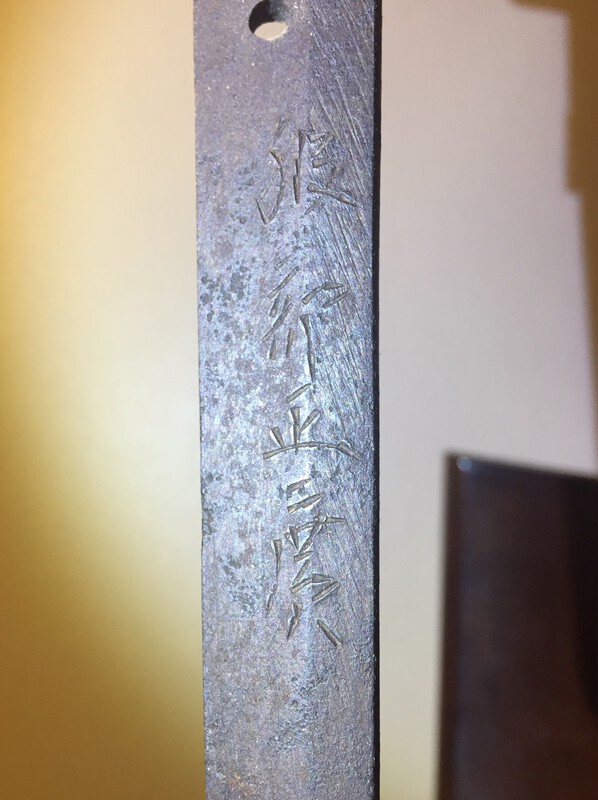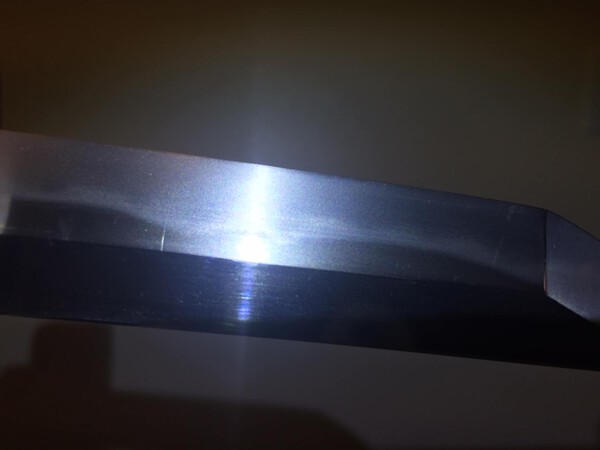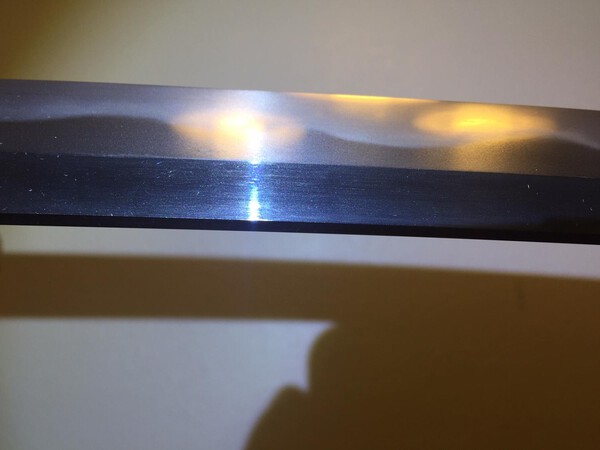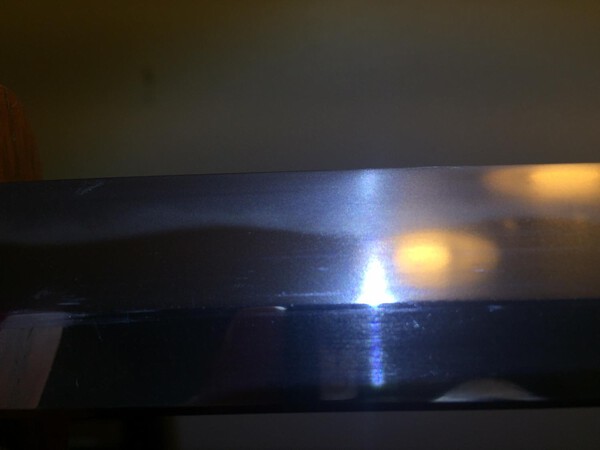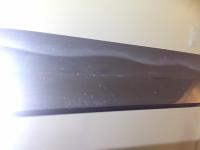-
Posts
92 -
Joined
-
Last visited
Content Type
Profiles
Forums
Events
Store
Downloads
Gallery
Everything posted by Jason N
-
It’s personal preference. I would pick a color that complements the Tsuka Ito, so gray/silver. If I was going to display it with a katana, I would order two of the same color and replace both so they match exactly. You can never go wrong with black, so I would pick up some spares in black in case I didn’t like how the colored one looked.
-
Another interesting theory I have heard is that this is done to assist in resheathing of the sword to provide a tactile feedback when you are about to reach the tip of the kissaki against the back of your hand. Personally, the back of my hand is not sensitive enough to feel the difference between the change in finish, but I don’t have samurai senses.
-
Greetings, Pictured are two Nihonto. As you can see, the polish on the mune at the kissaki has a "dull" or frosted finish that runs about 5 1/2 cm on the mune from the tip of the kissaki towards the mune-machi. What, if any, purpose does this have? The only thing I've heard is that this type of polish is for Tameshigiri to give a visual reference to be at the proper distance to the target. Any other ideas?
-
Thanks Jussi, that is very helpful. I know you couldn't say without seeing the blade, but do you think it would be worthwhile to submit to Shinsa (assuming it would pass)? I see Hozon papered Nihonto on Aoi and other sites that don't seem to sell for much more than blades without papers. I'm in the U.S., so I would have a considerable expense to send it through an agent to Japan. I'm thinking no... That said, on the plus side, I have another box to tick on my next purchase.
-
Hello, newbie here. I just took ownership of a papered Wakizashi. I have no previous experience with NBTHK papers, but from what I can read, I think I can read "Ninteisho" and "Item, Wakizashi, Hiromitsu" I can make very little sense of anything else, dates, rank, additional information, etc. I know where to look on the paper to find this information, I just can't read it. I believe the envelope is dated 2012 (other side from pic). I can upload better quality pics or scans, but I have attached what I have from the photos I took immediately after unboxing. Any help would be appreciated. Thanks,
-
As mentioned, contract a professional. Drilling the hole in the Tsuka to match the Mekugi-ana should not be a problem, which I assume is what you mean. I wouldn’t want to drill an antique nakago to fit a contenmoprary Tsuka.
-
Nice pictures Ray. Photographing Nihonto is so challenging.. the angle of light, color temperature, exposure, etc., it's adds another dimension to collecting Nihonto as a hobby. Here's one that I got out of about 50 throwaway shots...
-
Oh well... I guess it smells better than CLP, my other alternative...
-
I just ordered some. Does it have the clove odor of choji oil?
-
Wow! What a difference a polish can make.
-
I took a few more photos today now that I have some time, and I used an actual camera! Still quite some detail lost, as I had to compress the images quite a bit. I think these photos show the jihada pretty well, so tick a box in the Gendaito column. I suppose it's possible to have jihada from folded mono-steel, but every example of that I've seen looks like a fake Damascus. Anyone notice what looks like the beginning of a ware in the kissaki? Could that indicate laminated, e.g. a hansamai construction? There are other areas along the ha that look like a change in texture between the ha and ji which suggests a laminated constructionto me.
-
Thanks Jussi. I did find the variation of masa on my sword used in other mei from other smiths. I’m confident the translation is Hattori Masahiro, but puzzled why different variations of “masa” appear on other Hattori Masahiros. It leads me to believe that there must have been different people signing, leaving the question which variation did the smith use vs his apprentices or workers? It’s frustrating not being able to find a Gendaito from this smith to compare with. I’ve found dozens of Showato and Gunto, but all with the variation of masa that doesn’t match mine.
-
I transcribed the Kanji from my Masahiro, and something seems odd about the Mei. Although it's very similar to "Hattori Masahiro", the kanji for "Masa" (3rd from top) appears different than in all the other examples. See attached pic.
-
I took some quick pics when I got home. Maybe these will help. Now that I’m home, I can hold the sword in hand, and my doubts are lessened. The pics are lower res uploaded. In the originals, I think I can see wariha tetsu lamination method.
-
Just to clarfiy on my previous reply... I believe the Hattori in Seki and the plain Hattori are from the same smith as on my sword, but from different times, and I believe the mei were often signed by workers, not the actual smith. The mei on my sword is the sloppiest example I’ve seen (not very re-assuring) and all the mei I’ve seen I would attribute to “my” Masahiro are better executed than mine. Those swords are also very different than mine. I’ll be back home tonight, so I’ll try to get some better pics besides the stuff I had archived on my phone.
-
Thanks for posting the Nakago pics. I have studied those in detail. None are a precise match. The closest is the pllain Hattori mei with seki stamp. The Hattori mei “working in Seki” is the next closest. All the others are definitely not the same smith and can be ruled out 100%. That said, I doubt the same hand signed any of those Hattori nakago. Of the dozen or so nakago I looked at bearing “Hattori Masahiro”, the writing is just slightly off from on mine, and I haven’t seen a single other Hattori Masahiro mei on a Gendaito. I’m sure the Showato/Gunto he produced far otnumbered any amount of Gendaito he (may have) made, though.
-
From my reasearch, there were 3 different Hattori Masahiros that worked as swordsmiths. I believe the Massahiru that was from Gifu and produced swords in Seki is my Masahiro. There are two different Masahiro Mei shown in the linked pic in my OP. The example shown on the left is the same Mei on that Aoi art blade. His mei is the closest match, and I believe he signed (or someone signed) his showato/gunto made to support the war differently than his Gendaito. I’m no expert on mei or kanji though.
-
The two kanji for “Ha tori” look similar, but somehow off. The nakago, file marks, placement of the mei, and strokes also all look different to me, but I’m certainly no expert.
-
I cannot comment on the period or school, but to me, it has an appealing form and the blade appears to be quite healthy. Nice find. ????
-
Based on information from the seller, my Hattori Masahiro was from Gifu.
-
Jean, Thanks for the re-assurance. I think regardless of what the consensus, this sword will always remain in my collection as it represents a transitional and pivotal point in my collection... a "first love", so to speak. I've come on some hard times since I acquired this blade, and I've had to part with some items that I highly prized. It never occurred to me to part with my Masahiro, though. I'm doing much better now, and if my new financial situation remains stable, I can begin adding more to my collection over my lifetime. Some others may come and go, but I'll only ever have one that was my first. -Jason
-
Brian, Looking at the seller's photos before purchase, the same thought occurred to me as well, which is why I asked them. There was a language barrier, and the reply that I got back was that it was traditionally made from Tamahagane. I asked for more detailed photos to be sent, but was told only the web pics were available. I didn't want to press the issue, and for the asking price, I took the plunge. I could have easily spent the same on a Chinese blade, and would be a fair price for a Showato, and a bargain on a Gendaito. At least, that's how I talked myself into it I'm now in the process of acquiring my "second" (or first?) Nihonto, an NBTHK papered Edo period Wakizashi. At some point in the future, I would definitely add a papered Katana to my collection, one worthy of a far greater degree of artistic and historical appreciation above that of my Masahiro. For my funds, and my level (or lack of) knowledge, the Masahiro served it's purpose to satisfy my desire to own a Nihonto instead of a Chinese copy. I guess there's some level of uncertainty if what I have is "Nihonto" (traditionally made Japanese sword). Hopefully, when I get some better pics up, it will help to better determine what I actually have. I wonder what conclusions we might make differently (if any) if my Masahiro was mumei. My doubts come more from who made it, than the sword itself.
-
Yes, that is my sword that was on Samuraishokai. I included some other Masahiro example pictures for Mei comparison only. Those do not belong to me.



